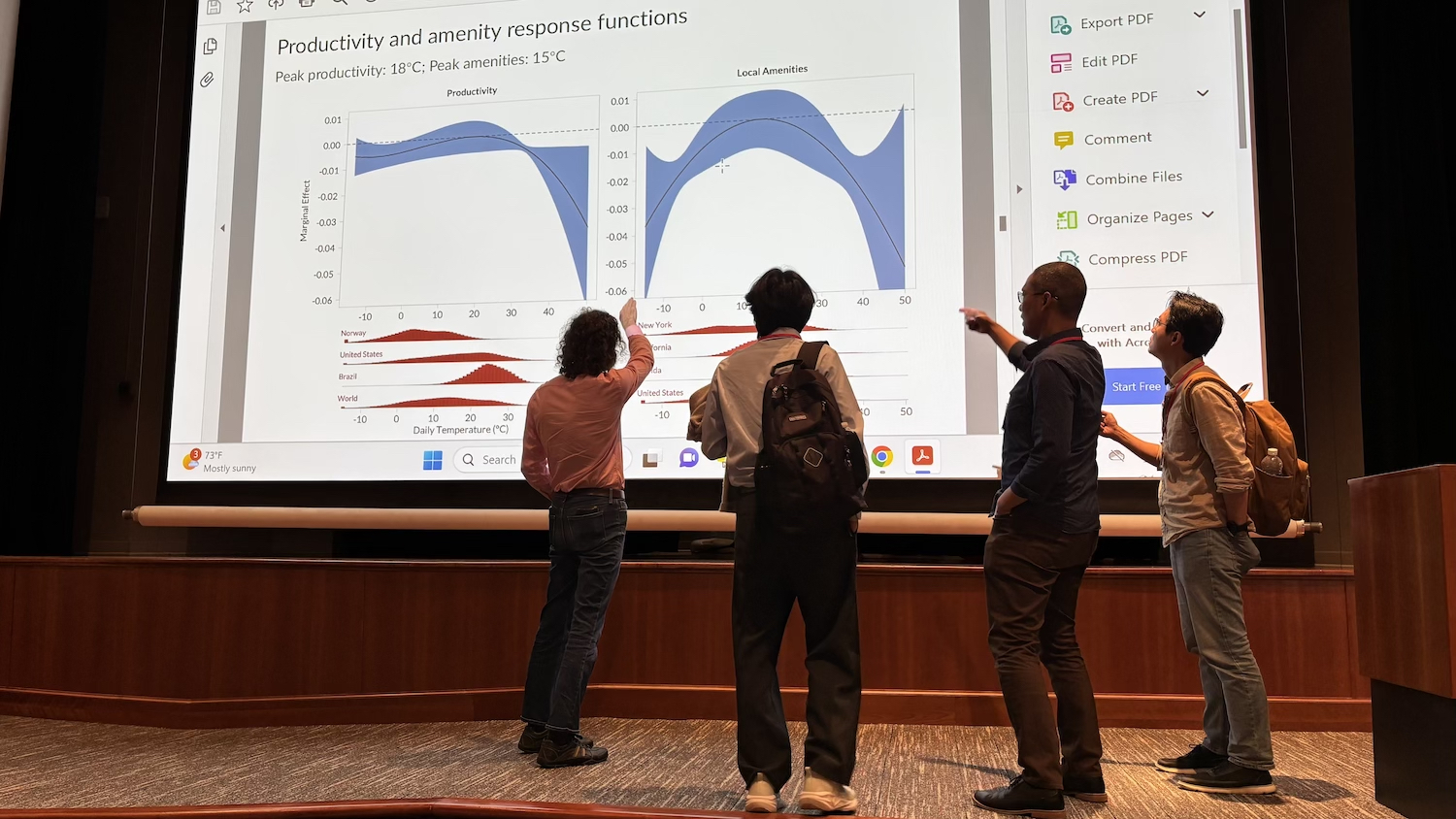Robert Clark and Lee Craig Examine North Carolina’s Public-School Teacher Retirement Benefits
The Poole College researchers found that North Carolina’s public-school teacher retirement plan, compared to many other state teacher retirement plans, is "in good shape."

By Robert L. Clark, Professor of Economics, and Lee A. Craig, Alumni Distinguished Professor of Economics, in the Poole College of Management
Cuts in Plan Benefits Across the U.S.
Over the past two decades, in response to the rising fiscal burdens of public-sector pension plans in the United States, many state legislatures have substantially reduced the lifetime value of retirement benefits for newly hired public-school teachers. In research published recently in the scholarly journal Industrial Relations, we estimate, with our co-author Nino Abashidze, the change in the mean monthly benefit, at retirement, for teachers retiring with 30 years of service between 2000 and 2020. We find that, on average, 2020 monthly benefits were 11.2 percent lower than those of teachers retiring in the same plan, with the provisions that were in place in 2000. In dollar terms, a typical teacher retiring in 2020, whose final salary was $50,000, would receive a lower annual retirement benefit of roughly $3,400 ($280 a month) in her first year of retirement compared to a similar teacher who retired in 2000.
However, the reduction in future retirement benefits is far from uniform across the 50 states. Among the 41 states that have defined benefit plans comparable to the plan provided by the North Carolina Teachers and State Employees Retirement System (TSERS), 25 have made changes to their plans; while 16, including North Carolina, have made no changes. Among the states that have revised their retirement plans since 2000, reductions in monthly benefits range from less than two percent to over 50 percent compared to the benefit provided to teachers retiring in the same plans under formulas that existed in 2020.
Sources of Reductions in Teacher Retirement Benefits
Benefit reductions in initial retirement benefits in defined benefit plans for teachers have come through a variety of changes in the retirement benefit formula. Changes to the benefit formula include reductions in benefit multipliers, increases in the number of years used to calculate final average salary, and increases in the age and service requirements for normal retirement. The impact of these changes on the initial retirement benefit can be shown by examining the benefit formula for a teacher retiring at the normal retirement age:
Benefit = benefit multiplier (1.82% in North Carolina) times final average salary times years of service.
Lowering the multiplier clearly reduces the initial benefit. Increasing the number of years used to determine final average salary will also reduce the benefit if there have been any salary increases. Increases in the normal retirement age, together with early retirement penalties, will result in lower initial benefits for teachers retiring at the same age.
In addition to the reduction in initial retirement benefits, the lifetime value of teacher retirement have been reduced by several other policy changes. Many states have increased employee contributions, meaning teachers are now paying more, on average, for these lower retirement benefits. Also, many states have reduced or eliminated cost-of-living adjustments so that retirement benefits do not increase with inflation, which further erodes the inflation-adjusted value of teacher retirement benefits. Finally, some states eliminated their defined benefit plans and adopted defined contribution or hybrid plans.
Detailed Findings
Our analysis found that a number of plan characteristics explain the decline in teacher benefits across the states. The composition of a plan’s membership tended to affect the rate of decline in benefits, with teacher-only plans experiencing a smaller decline in initial benefits. In some states, public teachers are not covered by the Social Security system, and these states tended to have larger reductions in pension benefits. States in which teachers were covered by a union and in which retirement benefits were collectively bargained had more moderate declines in retirement benefits. Our final conclusion was that states with poor funding ratios were more likely to have had bigger declines in teacher benefits. (According to the North Carolina state retirement system, the funding ratio of TSERS is 88.3%, which is one of the country’s higher rates).
We find that the average decline in initial monthly benefits in the 23 teacher-only plans is substantially smaller ($204 a month or 8.0 percent) compared to teachers in the 18 other plans in our study, which include teachers and other state employees ($378 lower monthly benefit or a 15.4 percent decline in initial benefits). The average decline in benefits in the 29 plans in which teachers and other state workers were covered by Social Security saw smaller reductions in their initial monthly retirement benefits between 2000 and 2020; 10.1 percent (or $238 per month) for those in Social Security compared to 13.9 percent (or $382 per month) for those not in Social Security. Retired teachers in states with mandatory bargaining experienced a 9.8 percent (or $230 per month) decline in initial benefits compared to a reduction of 13.7 percent (or $368 per month) in the “non-union” states. Finally, plans with a funding level of less than 75 percent of liabilities had substantially greater benefit declines ($379 or 14.8 percent) than plans with a funding ratio of greater than 75 percent ($176 or 7.5 percent).
We conclude that, overall, the separate, teacher-only plans; plans in the Social Security system; unionization; and plans in good financial shape were most likely to be associated with smaller cuts, on average, in teacher retirement benefits.
North Carolina’s Plan
As for North Carolina’s public-school teacher retirement plan, compared to many other state teacher retirement plans, it is, as judged by the metrics we analyzed, in good shape. As noted, over the past two decades, it experienced no reduction in benefits from changes in the plan’s benefit formula. North Carolina state teachers do share a plan with other public-sector workers; North Carolina teachers are in Social Security; there is no mandatory collective bargaining for teachers in the state; and the funding ratio of the North Carolina state employees’ retirement plan is one of the highest in the country.


